- Home
- >
- Software Development
- >
- TOP 3 Low-Code Tools for Application Development
TOP 3 Low-Code Tools for Mobile Application Development
Let’s face it, the majority of users around the globe are now mobile-first. Case in point, by the end of Q1 2021, 54.8% of all internet traffic came from mobile devices (not including tablets). What does that translate to?
If you’re not considering adding a mobile app — whether native or web-based — you run the risk of losing out on a large audience. This is especially true as more and more people abandon the traditional desktop/laptop device and opt to only use a smartphone.
So, what do you do? If you have an in-house dev team, you task them with designing and developing your company’s first mobile application or progressive web app (PWA).
If you don’t have a capable dev team, what are your options? You could always outsource the development of your app. If that’s not an appealing option, there’s always the low-code route.
Low-Code and App Development

Low-code is exactly what it sounds like: An approach that simplifies the software development process by using drag-and-drop tools with a user-friendly GUI. What’s important to understand is that low-code doesn’t mean the process is 100% drag-and-drop.
You do still need to have some understanding of how applications function. Primarily, you need to know how your app uses data and how that data is stored and delivered to the app. In other words, you’ll need to be able to create (or upload) a “database” to store the data for your app.
The good news is that most low-code services make this process simple, using simple forms.
The real (and, for the most part, only) challenge with low-code is in the planning and mapping out of the application. You can’t just dive in and start dragging and dropping your way to an app. You have to have an idea of how the app will function, how the app will accept input from the user, how the app is laid out, and how the app will interact with data.
You won’t, however, have to write a single function, call, or comment of code. And some low-code solutions even allow you to choose from a basic template (such as a scheduling app) to use as a foundation for what you want to build. In the end, you can save considerable time and money going this route.
With that said, let’s take a look at three popular low-code services that make it easy for your company to build and deploy an application for customers and consumers.
Low-Code Tools for Application Development
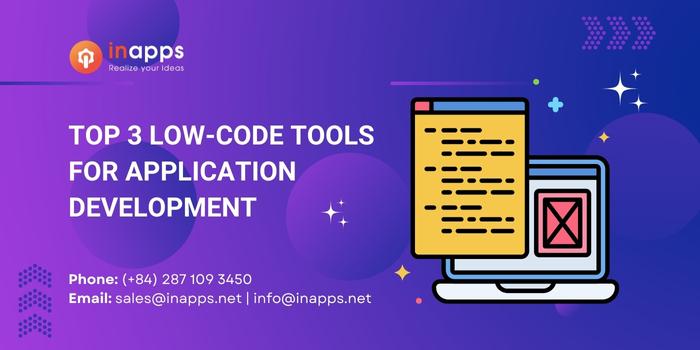
1. Appian
Appian allows you to create an engaging and consistent user experience across web and mobile platforms. With Appian you can quickly build and deploy your apps (accelerating the software lifecycle up to 17x and reducing costs by up to 50%, the company claims) and even collaborate on the app with various teams within your company. The apps you build with Appian will offer a consistent look, regardless of the device or platform they are used on.
What is Appian used for?
The Appian low-code solution offers features such as:
- Simple to use UI.
- Real-time alerts for best practices and risky design patterns.
- Incorporate complex business rules, data, scheduling, and automation.
- Integrate with third-party services with pre-built industry-standard connectors.
- Low-code expressions languages allow you to customize your app beyond the GUI tools.
- Collaboration tools, such as doc comparison, shared package linking, and group security.
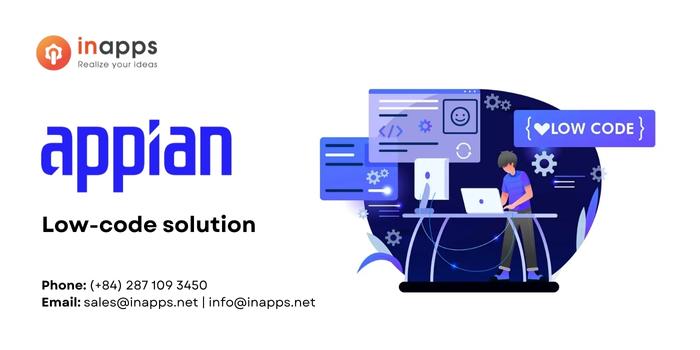
What is Appian?
Pros and Cons of Appian
One of the biggest plusses with Appian is that the company goes out of its way to guide you through the build process. Not only do you receive instant feedback on your application, but development is divided into distinct processes to make it even easier. By taking this path, you can separate such things as database creation and UX into different teams, so you don’t have to worry you’re assigning a task to a team without the necessary skills. Appian also includes built-in tools for collaboration and task management.
So far, Appian might sound like the perfect solution. However, there are a couple of knocks against the service. First off, Appian doesn’t include tools for performance monitoring — so if being able to keep tabs on how well your app functions after deployment is a necessity for your business, this might be a problem. Second (and this could be a real problem for those looking to deploy on Android), Appian’s third-party Java library API support is far from ideal. If you’re looking for API integration that involves multiple security patterns — such as Token/API key (OAUTH) — you might run into problems with Appian.
2. Mendix
The Mendix low-code solution is used by New Balance, Zurich, Canada Post, CHUBB, Ingersoll Rand, ConocoPhillips, and over 4000 companies worldwide. What sets Mendix apart from some of the competition is that the platform is focused on enterprise development, for things like online portals, automated workflows, digitalized processes, and modernizing legacy systems.
With Mendix, you can choose from a WYSIWYG no-code IDE (Mendix Studio), or a low-code IDE (Studio Pro). So if your collaboration team consists of both developers and non-developers, there’s a tool that should satisfy both camps. Other Mendix features include:
- Atlas UI Framework for responsive designs.
- Third-party APIs to extend the functionality of your app.
- Use one of the over 400 building blocks from the curated library.
- Get help along the way with Mendix Assist AI development assistant.
- Cloud-native scaling.
- One-click deploy.
- Application lifecycle management.
- App performance and quality monitoring.
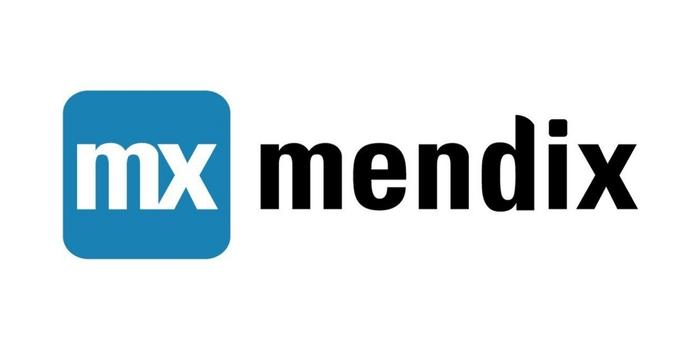
What is Mendix?
Pros and Cons of Mendix
Mendix enables you to create, view, and edit your applications from the convenience of your desktop. But more importantly, Mendix frequently releases updates to the platform, as well as new features and better (more intelligent) solutions. So if you’re looking for a low-code platform that keeps up with the ever-changing mobile app landscape, Mendix is a great option. And because Mendix does automatic validation as you build, it’s possible to develop and deploy faster, with fewer technical errors.
One ding against Mendix is that due to the overwhelming amount of supported third-party modules, you might find some of those add-ons aren’t very well documented. So the more you dig into the curated library, the more work you might wind up having to do. However, Mendix does have a very active community forum, so help is never that far away.
3. QuickBase
QuickBase is used by companies like Sprint, UBM, SiriusXM, and Columbia and is perfectly suited for teams looking to solve bottlenecks in their pipelines and achieve higher levels of productivity. With a beautiful drag-and-drop builder, even those with little to no development experience can automate complex processes with the click of a mouse.
The QuickBase UI also makes it possible to preview different configurations for your app so you can find the ultimate solution for your business needs.
As for data, QuickBase makes it easy for your teams to upload a spreadsheet or even copy and paste it from a desktop clipboard. Once that data is uploaded, you can begin the building process to intuitively create the app your company has been waiting for.
Other features found in QuickBase include:
- Integration and workflow orchestration with QuickBase Pipelines.
- Continuous Deployment allows you to roll out changes in real-time with zero downtime.
- Application Lifecycle Management Sandbox makes it possible to tweak, transform, and change a schema without having to offline your application.
- Real-time personalized insights provide visibility across your organization.
- Enterprise-grade security and governance (including SOC1/SOC2, HIPAA, EU-US Privacy Sheild, and DFARS).
- Roles and permissions.
- Audit logs.
- IP filtering and SSO.
- 2-factor authentication.
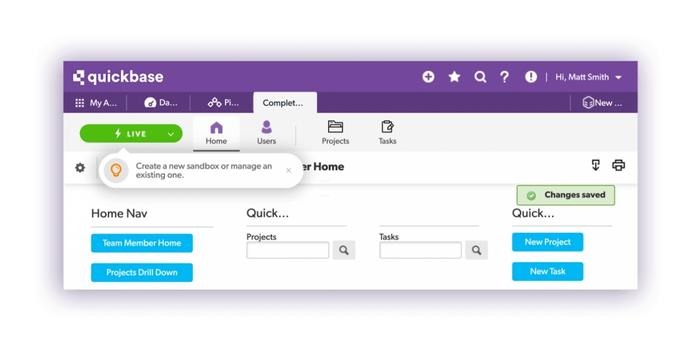
What does QuickBase do?
Pros and Cons of QuickBase
The biggest pro of QuickBase is how customizable it is — which means it will bend to the needs of your business, instead of dictating how you work with the platform. Also, because QuickBase is one of the largest companies on the list and has Enterprise-grade plans (with associated costs), the support is unmatched. When you or your team run into a problem, you’ll find that QuickBase support is very quick to resolve your issues. Based on the user reviews and comments I read, it’s also clear that QuickBase users consider the speed of response time for support questions to be a big plus. There is also plenty of material (whitepapers, webinars, eBooks, case studies) in their knowledge base to keep you moving forward.
You might find, however, that QuickBase isn’t the most intuitive on the list. Individual templates can be a challenge, so it’s a kind of one-size-fits-all approach to low-code development.
Conclusion
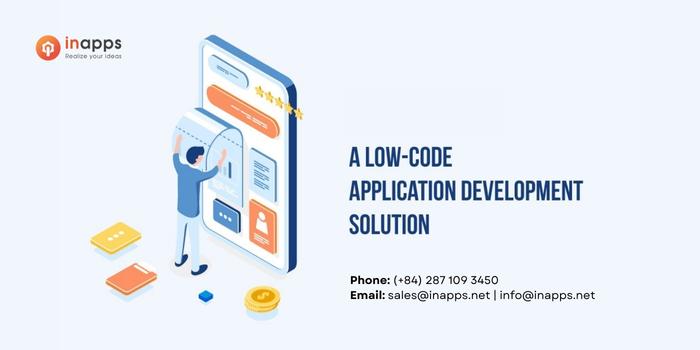
There is no end to the low-code development solutions available to help your company easily build your first mobile or web application. Any of these three would be a great place to start on your low-code journey. Just make sure, before you start, that you have a viable plan for your app, so you’re not heading into the process without some level of understanding of what your business needs from this app.
If you were to ask me which of these three solutions is best suited for your business, I’d summarize it like this:
- If you need a low-code solution that caters to those with absolutely zero coding skills, and hand-holds you along the way, Appian is your best choice.
- If you’re looking for a low-code solution that offers a steady stream of new features, serious third-party integration, and some of the best app development guidance in this sector, Mendix is your tool.
- If you prefer a tool that is seriously customizable, with tons of support material and a staff that quickly responds to your issues, QuickBase is an outstanding choice.
The good news is, if any one of these options fits your budget, you’ll probably find it to be a great choice. But if I had to choose just one, I’d go with Mendix because it has the best balance of features, ease of use, and support.
Lastly, if ever you feel the need to learn more about technologies, frameworks, languages, and more – InApps will always have you updated.
List of Keywords users find our article on Google
[sociallocker id=”2721″]
| mendix |
| appian training |
| learn quickbase |
| custom application development |
| mendix training |
| “low-code” |
| low code wikipedia |
| quickbase review |
| quick base reviews |
| appian reviews |
| mendix app store |
| quickbase |
| quickbase wikipedia |
| quickbase reviews |
| mendix api |
| appian culture |
| appian software |
| “low code” |
| quickbase pipelines |
| appian jobs |
| mendix cloud |
| quickbase software |
| ho chi minh city to zurich |
| appian community |
| quickbase solution provider |
| hire quickbase developers |
| what is appian |
| quickbase api |
| quickbase integration |
| appian case management guide |
| authentication development tools |
| appian forum |
| www quickbase |
| enterprise mobility management comparison |
| speed boost code |
| mendix wikipedia |
| appian java |
| sso mendix |
| send to quickbase |
| quickbase consultant |
| quickbase email integration |
| quickbase file management |
| quickbase consultants |
| mendix world |
| quickbase developers |
| quickbase partners |
| quickbase apps |
| quickbase app |
| what is appian used for |
| what is mendix |
| mendix consultant |
| faceit client |
| appian world |
| quickbase development |
| wawa application |
| mendix software |
| appian online training |
| quickbase enterprise |
| what does appian do |
| ux designer zurich |
| fintech app development cost |
| no code tools |
| no code low code |
| cost to develop fintech app |
| lifecycle of your mobile application |
| app development company |
| “quick base solution provider” |
| “lowcode” |
| “mendix” |
| forum mendix |
| mendix forum |
| quickbase linkedin |
| “appian” |
| appian api |
| mendix low code development |
| appian technical consultant |
| where can you add validation in mendix? |
| appian all functions |
| tommy tools near me |
| progressive web app training |
| quickbase jobs |
| mendix best practices |
| mendix connector |
| mendix reviews |
| mendix functions |
| quickbase connector |
| mendix studio |
| quick base consultant |
| quickbase file managment |
| mendix jobs |
| mendix logo |
| mendix authentication |
| appian connectors |
| idestudio |
| mendix ui |
| quickbase project management |
| appian intelligent contact center |
| best low code platform 2022 |
| design patterns wikipedia |
| mendix features |
| mendix go make it |
| mendix native mobile |
| mendix store |
| quickbase automation |
| ingersoll rand tools near me |
| mendix world 2020 |
| quickbase training |
| business process mapping wiki |
| quick base app development |
| mendix app |
| mendix apps |
| net low code |
| quickbase customization |
| quickbase help |
| appian cost |
| what does quickbase do |
| appian case management framework |
| appian features |
| appian world 2021 |
| appian application |
| mendix clients |
| mendix competitors |
| quickbase guide |
| quickbase services |
| compare application lifecycle management software |
| mendix partner |
| perfect solution group |
| ultimate solutions jobs |
| ingersoll rand jobs |
| appian products |
| quickbase applications |
| what is quickbase used for |
| appian workflow automation |
| appian tool |
| hipaaone linkedin |
| mendix low code |
| low code mendix |
| professional android 2 application development |
| ingersoll rand vietnam |
| mendix application development |
| mendix integration |
| net3 framework |
| appian integration |
| appian process automation |
| low code no code app development |
| software design patterns |
| best no-code app builder |
| no code application development |
| low code |
| application lifecycle |
[/sociallocker]
Let’s create the next big thing together!
Coming together is a beginning. Keeping together is progress. Working together is success.


















